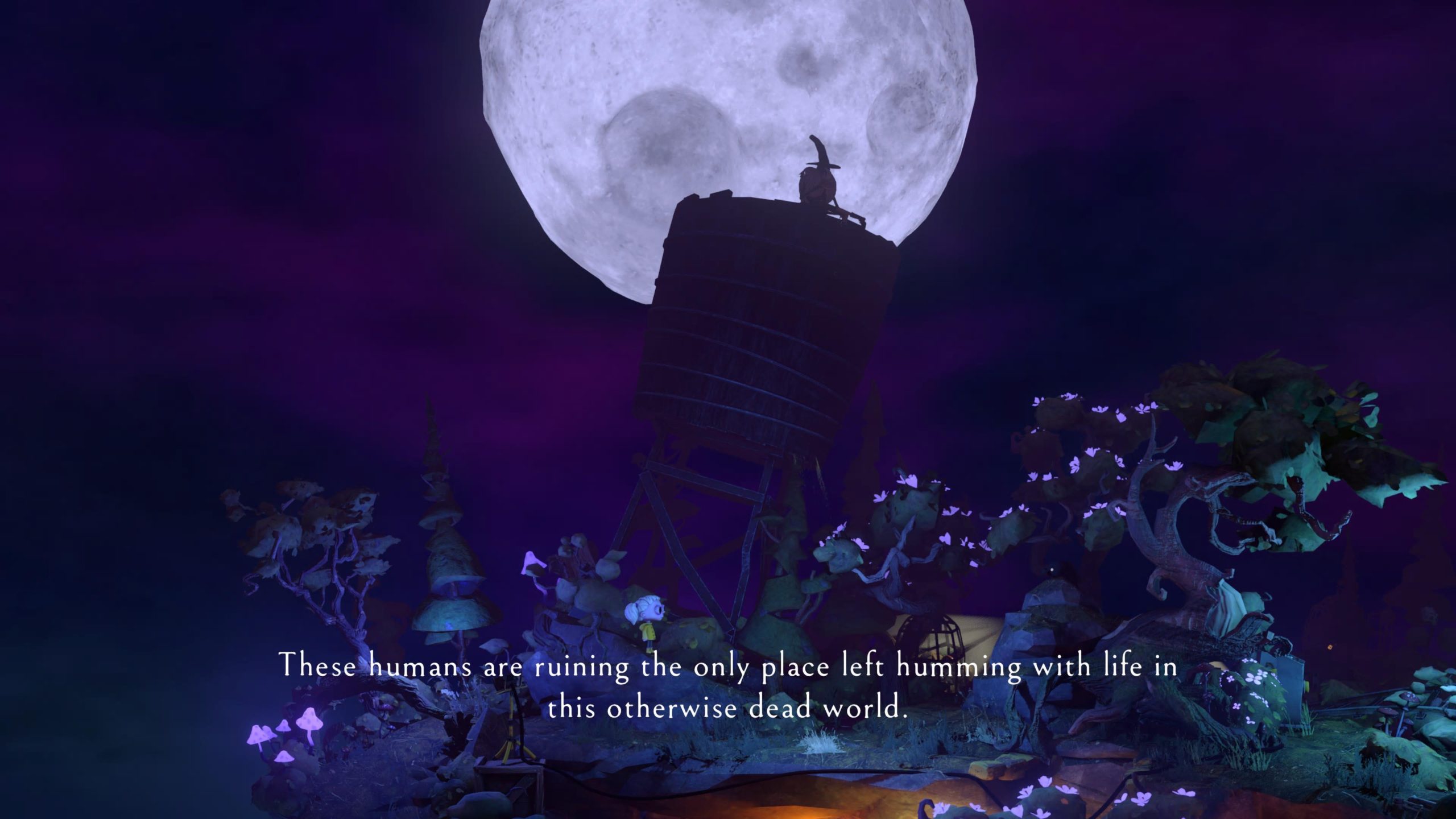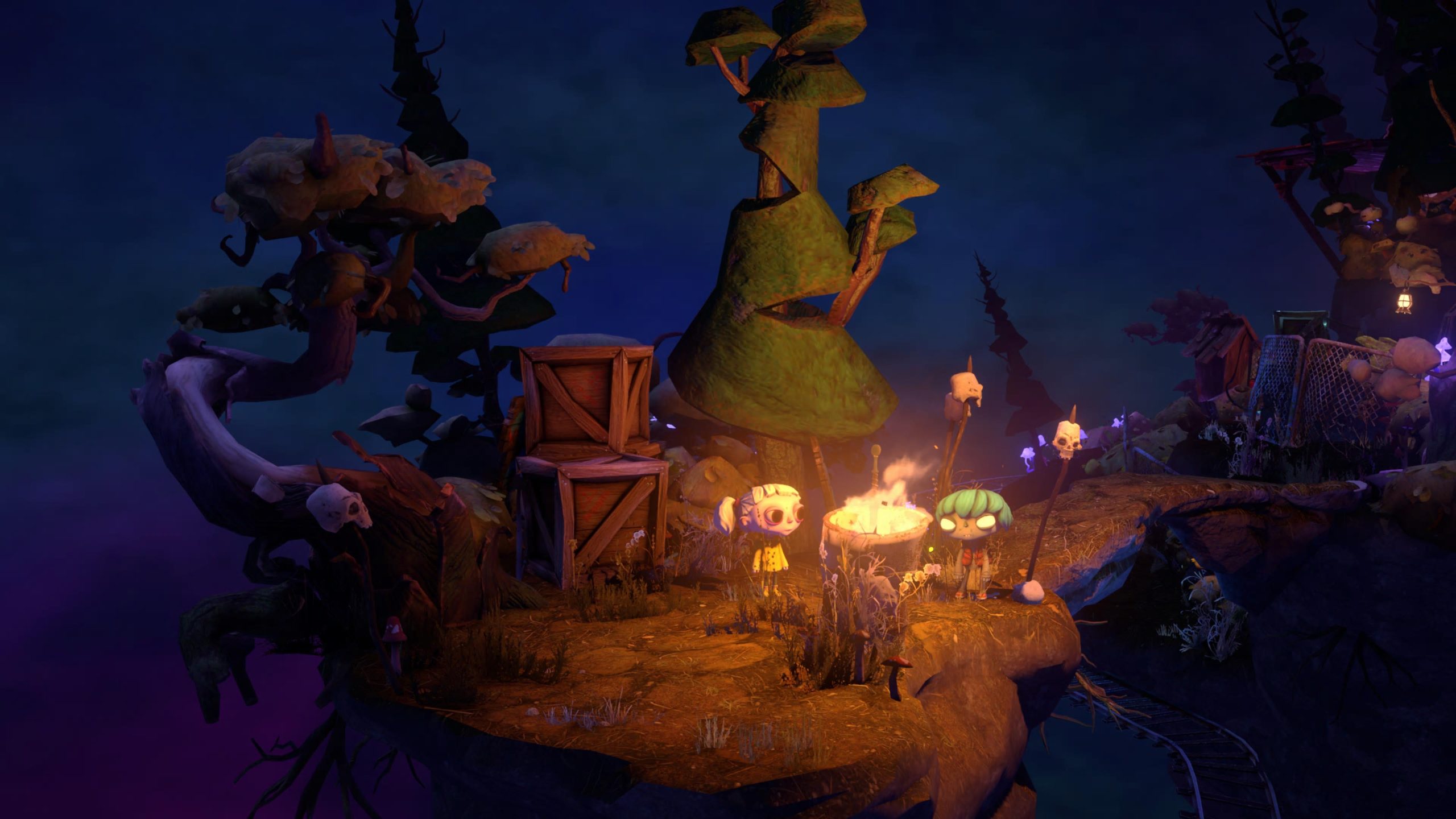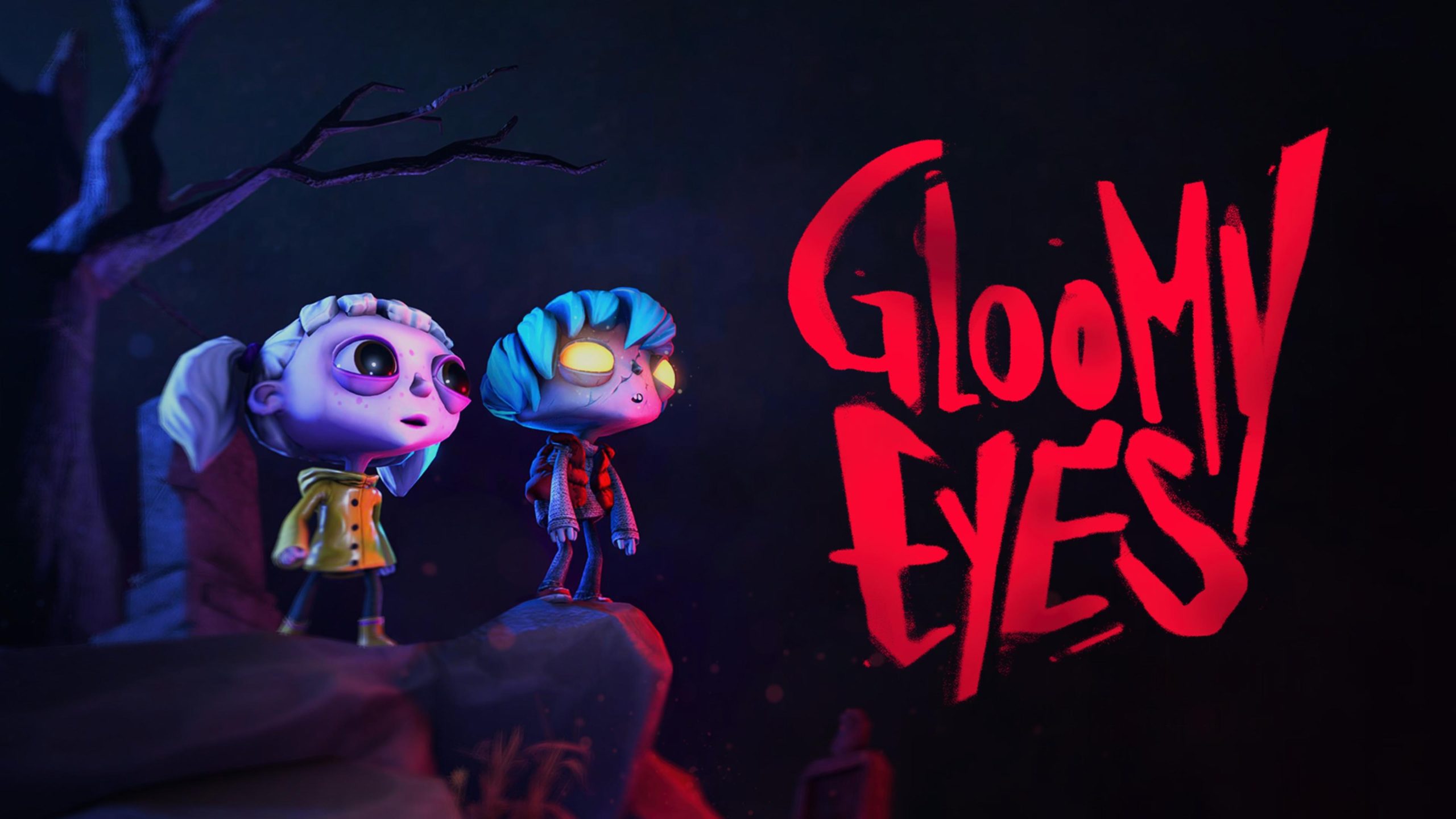Getting film adaptations of video games is becoming more prevalent as the years tick on, but there are very few movies that become video games – without it becoming an offensive move tie-in, of course. Gloomy Eyes is the exception to that rule, proving that the love for an idea can expand across multiple forms. Originally a short film exclusively in VR, Gloomy Eyes is now a fully playable video game.
It’s a retelling of the short film in its own way, making the game perfectly playable without checking out the harder-to-access source material. The game’s described as a “self coop” puzzler, think as though it’s like playing Brothers – A Tale of Two Sons by yourself, switching between the two characters at your will. Inspired by the works of Tim Burton and sharing some visual DNA with Laika Studio’s Coraline, Gloomy Eyes is like a hot chocolate in front of the fire on Halloween. There’s horror here, but it’s far from horrific; no jump scares, no terrifying antagonists, just a whimsical but grim fairytale to curl up with. ‘Tis the season after all for something like Gloomy Eyes, but is it a trick or treat? Let’s get into it.
Not All Doom And Gloom
The sun has disappeared, bringing an endless night and the waking dead to the surface. As a result, the humans hunt down the zombies, blaming them for the sun’s demise. You play as both Gloomy, a zombie boy, and Neena, a human child. Two special children who long to bring back the sun together and defy their differences with love.
As you can probably tell, it sounds very much like a fairytale: star-crossed lovers, a modern Grimm-style setting and high stakes involving good vs. evil. And to tie a neat bow, there’s a gruff gravekeeper narrating the story and being the voice of Gloomy and Neena. It’s not surprising that Gloomy Eyes is a revisit to the VR short film of the same name, as it has such a rich setting.
It’s a shame that the plot is very by-the-numbers. I don’t think I need to even allude to how the story goes for players to know what’s going to happen, but the game’s visuals, tone and gameplay lessen the sting of its predictable plot.

Uprise And Shine
Broken into 14 chapters, you’ll explore these dioramic levels, switching between both Gloomy and Neena. Both of which interact with environmental puzzles in different ways, so you’re working out in your head the right order to solve the levels. Gloomy can lift or move heavy items, as well as throw objects. However, he can’t be in the light, or else he’ll die.
Neena can walk into the light, as well as being agile enough to jump across gaps and interact with machinery – but she can’t go close to other zombies, or else she’ll die, unlike Gloomy. Oftentimes, you’ll find objects out of order and by the person who can’t utilise them, so it creates this back-and-forth brainteaser that is really well crafted.
Switching between the two is just the press of a button, making it seamless to navigate the levels. There’s no indication of who you switch to at all, outside of a camera shift. This is fine if they’re at opposite ends, but if they’re right next to each other, you can’t always tell who you’re playing as. It’s a problem that occurs a few times, as there are a lot of moments where one character will block the other’s path and trying to get past yourself gets tedious.

To The Moon And Back
Similarly tedious, which I’m sure will be fixed in a patch, are the multiple times I got stuck in the environment when moving a character to somewhere they maybe shouldn’t be. Because the levels are dioramas, the camera is based on your position in the level, meaning you won’t always see where you could be going perfectly. To circumvent this, you can zoom out by pressing the touchpad and glide around the diorama and explore every detail.
It’s more showing just how gorgeous the design and artistry is than helping you find your way around the level, though it helps a little. But because of this, I got stuck in the floor a handful of times, and if I got unlucky with an autosave, I’d have to restart the chapter entirely. It’s not a big problem because all levels can be beaten in a matter of minutes, if you know the puzzles, but it’s an example of being good, not great design.
Everything else about the gameplay is fun. Solving puzzles can be done in a couple of ways, sometimes, feeding into the opportunity for experimentation. There’s also a handful of moments you can play with the level itself, like scoring a basketball shot. All of it lends itself to a game that feels lived in, and whilst it doesn’t expand on its puzzles, the game doesn’t overstay its welcome to feel repetitive.

All Eyes On Me
Overall, Gloomy Eyes is a good game, but an even better world to explore. The story is a standard fairy tale ordeal that’s elevated by its visuals, characters and dioramic levels that are exceptionally charming. The Tim Burton inspiration of it all comes ever so close to derision, with it being a spooky but cosy world made popular by A Nightmare Before Christmas, etc.
However, there are even closer touchstones like Medievil or even 40 Winks that create a melting pot of similar ideas and aesthetics to conjure a whimsical Frankenstein’s monster-type game. I wish it played a little better, and I would’ve liked to see the puzzles become more multifaceted, but I’ve far from come away glum playing Gloomy Eyes.
Gloomy Eyes will release 12th September 2025 for PlayStation 5 (review platform), Xbox Series X|S, Nintendo Switch PC via Steam.
Developers: Atlas V, Be Revolution Gaming, 3Dar and Fishing Cactus
Publisher: Untold Tales
Disclaimer: In order to complete this review, we were provided with a promotional copy of the game. For our full review policy, please go here.
If you enjoyed this article or any more of our content, please consider our Patreon.
Make sure to follow Finger Guns on our social channels. Twitter, Facebook, Twitch, Spotify or Apple Podcasts – to keep up to date on our news, reviews and features.
